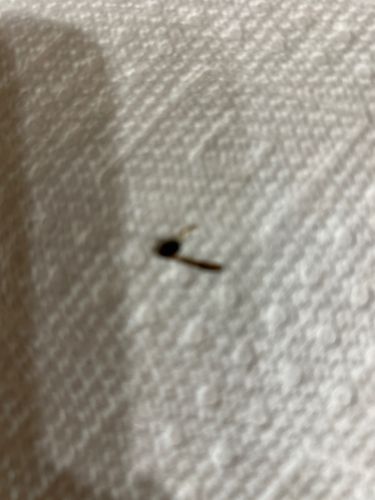Fruit Fly (possibly Dark-eyed Fruit Fly)
Scientific Name: Drosophila spp.
Order & Family: Order: Diptera, Family: Drosophilidae
Size: Typically 2-4 mm (0.08-0.16 inches)

Natural Habitat
Commonly found in kitchens, pantries, and anywhere ripe or decaying fruit/vegetables are present. They also live outdoors in areas with fermenting plant matter.
Diet & Feeding
Adult fruit flies feed on decaying fruits, vegetables, and other fermenting organic materials. Larvae feed on microorganisms and yeasts found in these decaying substrates.
Behavior Patterns
Flies are typically active during the day. They have a complete metamorphosis (egg, larva, pupa, adult). Larvae (maggots) are often found in decaying organic matter. Adult flies are very mobile and can quickly move between food sources and breeding sites.
Risks & Benefits
Risks: Can be a nuisance pest, contaminating food products with their larvae and transmitting bacteria from decaying matter to food. Benefits: Used extensively in genetic and medical research as a model organism (Drosophila melanogaster). In nature, they contribute to the decomposition of organic matter.
Identified on: 8/15/2025